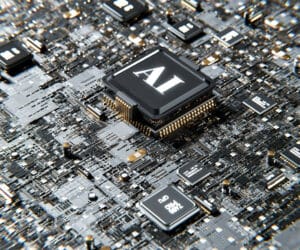Introduction
Introduction to Machine Learning and Computer Vision
In the realm of modern technology, machine learning and computer vision have become core components across many industries. From self-driving cars to facial recognition and medical image analysis, these technologies are significantly transforming our lives. Machine learning refers to the technique of using data-driven methods to enable computers to learn and improve from experience. Computer vision, a critical branch of machine learning, focuses on enabling computers to interpret and understand visual information like humans do.
Purpose of This Article
With the rapid advancement of machine learning and computer vision, numerous tools and frameworks like OpenMV, OpenCV, PyTorch, TensorFlow, and Keras have emerged. Each of these machine learning and computer vision tools has its unique features and strengths, making it challenging for beginners or those new to these technologies to choose the right tool. This article aims to introduce these popular tools in detail, helping readers understand their differences and connections to make informed choices for their projects.
Overview of Each Machine Learning and Computer Vision Tools

OpenMV
Introduction
OpenMV is an open-source embedded vision platform designed to simplify the development of machine vision applications. It comprises a small open-source hardware board and an integrated development environment (IDE), mainly targeting embedded systems and Internet of Things (IoT) applications. OpenMV's goal is to allow developers to quickly build and deploy computer vision applications without needing in-depth knowledge of complex image processing algorithms and hardware interfaces.
Key Features
- Hardware Support: The OpenMV board integrates a camera module, a microcontroller, and basic interfaces (such as I2C, SPI, UART), enabling it to run vision applications independently.
- Programming Language: OpenMV primarily uses MicroPython, a lightweight version of Python designed for microcontrollers, ideal for rapid development and prototyping.
- Built-in Algorithms: The OpenMV IDE includes several common image processing and computer vision algorithms like color detection, shape detection, QR code recognition, and motion detection, allowing users to call these algorithms directly without having to implement them from scratch.
Common Use Cases
- Robotic Vision: Building robots with visual perception capabilities, such as obstacle-avoidance robots and line-following robots.
- IoT Devices: Embedded in smart home devices, security systems, etc., for automatic monitoring and alarm functions.
- Education and Research: Used as an educational tool to help students and researchers learn and explore computer vision technologies.
Pros and Cons
Pros:
- High Usability: Uses MicroPython, making it very beginner-friendly and suitable for rapid prototyping.
- High Integration: The small hardware board integrates all necessary components, making it easy to deploy and use.
- Built-in Algorithms: Provides several common image processing algorithms, reducing developers' workload.
Cons:
- Limited Performance: Due to limited hardware resources, it cannot handle complex and high-performance computer vision tasks.
- Limited Functionality: The built-in algorithms are limited and may not meet all computer vision needs, potentially limiting expandability.
OpenCV
Introduction
OpenCV (Open Source Computer Vision Library) is an open-source computer vision and machine learning software library developed and maintained by Intel. OpenCV offers thousands of optimized image and video processing algorithms, widely used for various computer vision tasks such as face recognition, object detection, image segmentation, and 3D reconstruction. It supports multiple programming languages (such as C++, Python, Java) and operating systems (such as Windows, Linux, macOS), making it widely used by developers worldwide.
Key Features
- Rich Algorithm Library: OpenCV contains over 2500 optimized algorithms, covering from basic image processing to complex computer vision tasks.
- Cross-Platform Support: OpenCV supports multiple operating systems and hardware platforms, ensuring good portability.
- Multi-Language Support: Offers APIs in C++, Python, Java, etc., making it convenient for developers to use in different environments.
- Community and Documentation: OpenCV has an active community and rich documentation resources, helping developers troubleshoot issues and get started quickly.
Common Use Cases
- Video Surveillance: Real-time video analysis and surveillance, such as face recognition and motion detection.
- Augmented Reality: Image tracking and recognition in augmented reality (AR) applications.
- Medical Imaging: Used in medical imaging analysis for detecting lesions, image segmentation, etc.
- Robot Navigation: Helps robots perceive the environment and plan paths.
Pros and Cons
Pros:
- Powerful Functionality: Offers a rich set of algorithms and tools to meet various computer vision needs.
- Cross-Platform: Supports multiple operating systems and hardware platforms, ensuring good portability.
- Community Support: Has an active community and rich documentation resources, making it easy for developers to learn and use.
Cons:
- Steep Learning Curve: Learning and mastering all of OpenCV's features can take time for beginners.
- Performance Overhead: Some advanced algorithms require significant computation, demanding high hardware resources.
PyTorch
Introduction
PyTorch is an open-source deep learning framework developed by Facebook's AI Research team. It is renowned for its flexibility and ease of use, particularly popular in research and development. PyTorch provides a dynamic computational graph, allowing developers to modify and debug models during runtime. Its simple API and powerful GPU acceleration make PyTorch widely adopted in academia and industry.
Key Features
- Dynamic Computational Graph: Supports defining and modifying computational graphs at runtime, facilitating debugging and experimentation.
- Powerful GPU Acceleration: Built-in support for NVIDIA CUDA, enabling efficient computation on GPUs.
- User-Friendly API: Offers a clear and straightforward API, making it easy for developers to quickly get started and implement complex deep learning models.
- Community and Ecosystem: Has an active community and rich third-party libraries such as TorchVision, PyTorch Lightning, extending its functionality and application scope.
Common Use Cases
- Academic Research: Widely used for various deep learning research and experiments, such as image classification and natural language processing.
- Industrial Applications: Used in production environments for building and deploying deep learning models, such as recommendation systems and autonomous driving.
- Rapid Prototyping: Facilitates quick model building and testing for proof of concept and iterative development.
Pros and Cons
Pros:
- High Flexibility: Dynamic computational graph design makes model development and debugging more flexible.
- Excellent Performance: Good GPU support and optimization for handling large-scale data and complex models.
- Community Support: Active community and rich third-party library resources.
Cons:
- Learning Curve: Although the API is straightforward, beginners without a deep learning background may still need some time to learn.
- Relatively Smaller Ecosystem: Compared to TensorFlow, its ecosystem and toolchain are slightly less extensive but rapidly growing.
TensorFlow
Introduction
TensorFlow is an open-source deep learning framework developed by Google, designed to provide a flexible and comprehensive suite of tools and libraries for building and deploying machine learning models. TensorFlow supports static computational graphs, advantageous in building and optimizing large complex models. Its extensive functionality and powerful ecosystem make it one of the most popular deep learning frameworks in both industry and academia.
Key Features
- Static Computational Graph: Supports predefined computational graphs, making model optimization and deployment more efficient.
- Wide Hardware Support: Supports CPU, GPU, and TPU (Tensor Processing Unit), offering high-performance computing capabilities.
- Rich API: Provides multi-level APIs from low-level (TensorFlow Core) to high-level (Keras), catering to different development needs.
- Comprehensive Ecosystem: Offers a rich set of tools and libraries such as TensorBoard, TensorFlow Lite, TensorFlow Serving, covering all stages from development to deployment.
Common Use Cases
- Large-Scale Machine Learning: Excels in training and deploying large-scale data and complex models, such as image classification and speech recognition.
- Production Environment: Widely used in the industry for large-scale distributed training and online inference.
- Cross-Platform Deployment: Deploys models on various platforms using tools like TensorFlow Lite and TensorFlow.js.
Pros and Cons
Pros:
- Powerful Performance: Supports various hardware accelerations and large-scale distributed training, suitable for handling large and complex tasks.
- Comprehensive Ecosystem: Provides a complete set of tools and libraries from development to deployment, facilitating end-to-end development.
- Community Support: Large user base and active community, abundant tutorials, and documentation resources.
Cons:
- Steep Learning Curve: Fully mastering all TensorFlow features can take considerable time for beginners.
- Complexity: Its powerful functionality also means the framework can be relatively complex, sometimes overbearing for simple tasks.
Keras
Introduction
Keras is a high-level neural network API developed by François Chollet, initially released as an independent project, later integrated as the high-level API of TensorFlow. Keras is known for its simplicity and ease of use, making the construction and training of deep learning models more intuitive and efficient. Its design goal is to simplify the deep learning development process, enabling more people to get started and innovate easily.
Key Features
- Modular Design: Keras uses a modular design where various model components can be flexibly combined, facilitating rapid model building.
- User-Friendly: Provides a clear and intuitive API, lowering the barrier to entry for deep learning.
- Broad Support: Supports multiple backend engines (such as TensorFlow, Theano, CNTK), offering flexible computing options.
- TensorFlow Integration: As the high-level API of TensorFlow, it leverages TensorFlow’s powerful features and ecosystem.
Common Use Cases
- Rapid Prototyping: Ideal for quickly building and testing models for proof of concept and rapid iteration.
- Academic Research: Widely used in academia for research and experiments, helping researchers quickly implement and validate new algorithms.
- Industrial Applications: Used in production environments for building and deploying deep learning models, especially suitable for projects requiring quick iteration and optimization.
Pros and Cons
Pros:
- High Usability: Clear and intuitive API design makes model building and training much easier.
- Flexibility: Modular design and multi-backend support offer flexible development options.
- Integration: As the high-level API of TensorFlow, it leverages TensorFlow’s powerful features and ecosystem.
Cons:
- Performance Limitations: Due to its high-level abstraction, it may not be as efficient as low-level APIs for high-performance needs.
- Dependency: As TensorFlow’s high-level API, some functions and optimizations depend on TensorFlow's implementation.
This is the complete content of the first blog, covering the introduction and overview of each tool. The next blog will delve into the differences and connections between these tools, especially the differences between OpenMV and OpenCV, PyTorch and TensorFlow, and how to combine these tools in practical applications.
Want to develop an AI-powered IoT solution?
ZedIoT provides end-to-end AI model development & optimization for edge computing, industrial IoT, and smart devices.




